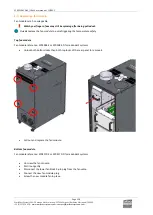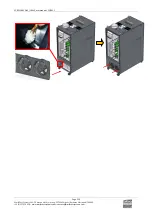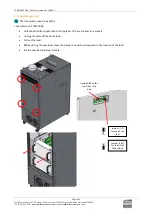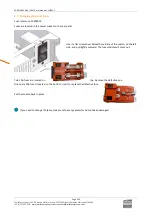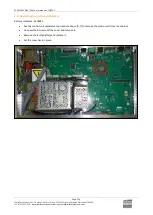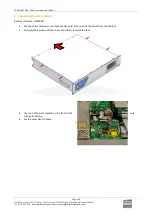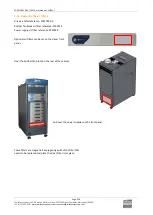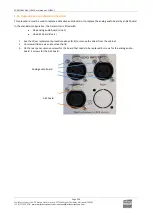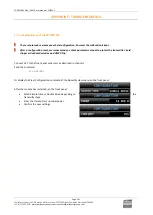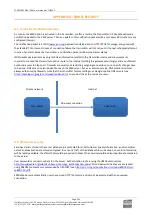
ECRESO FM 5kW / 10kW, user manual
–
11/2021
Page 242
WorldCast Systems SAS - 20 avenue Neil Armstrong - 33700 Mérignac (Bordeaux Métropole) FRANCE
+33 (0)5 57 928 928
–
www.worldcastsystems.com
–
APPENDIX G:
EMR & SECURITY
G.1.
Transmitter Notification Protocol
As soon as the EMR option is activated in the transmitter, or after a restart, the
Transmitter’s IP Module will send a
notification packet to the EMR server. Then an update to this notification packet will be sent every 60 minutes (or any
configured interval).
The notification packet is a JSON (
) payload transferred into an HTTP/S POST message, encrypted with
the standard TLS protocol. In case of connection failure the transmitter will not retry until the next scheduled attempt.
In case of an alarm inside the transmitter, a notification packet will be issued immediately.
JSON packet payload contains only technical information related to the transmitter status and measurements.
In order to succeed the transmitter needs a route to the Internet (setting the gateway accordingly), and an unfiltered
outbound access to https port. Firewalls are usually not restricting outgoing connections, so no specific changes have
to be done. DNS access is also required to reach the EMR server, but as a common service, DNS protocol is almost
always authorized by
firewalls. Note that the transmitter factory settings use Google’s public DNS servers (see
https://developers.google.com/speed/public-dns/
), so you don’t have to provide your own.
G.2.
EMR Server Security
Sensitive data is stored in the server database in a protected form. All customer private information, and transmitter
nature and localization are stored encrypted. In case of a theft of the database files or backups, no useful information
will be readily available; the effort that would be required to breach the security would be disproportionate compared
to the value!
User passwords are not stored at all in the server. Authentication is done using the HMAC protocol (see
http://en.wikipedia.org/wiki/Hash-based_message_authentication_code
). Stored password hashes are encrypted
using PBKDF2 protocol as recommended by USA NIST (see
http://csrc.nist.gov/publications/nistpubs/800-132/nist-
EMR Web Server automatically uses the secured HTTP/S protocol, and cannot be accessed with an unsecured
connection.
Transmitter
EMR Server
One-way connection
Private network
Internet

